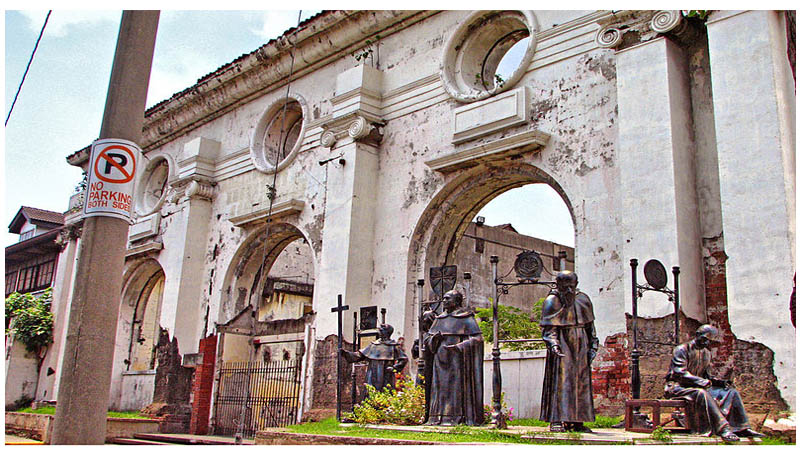San Ignacio Church stands within the boundaries of Intramuros, the historic walled center of Manila, the capital city of the Philippines. The church was designed by architect Felix Roxas Sr. and was completed in 1899. Its story weaves through many tumultuous times.
The Society of Jesus and its members, the Jesuits, decided to erect two churches in two different cities. The churches were both dedicated to St. Ignatius of Loyola, the Spanish priest who was the founding father of the Society of Jesus. He was known as the society’s “Father General,” but was also referred to as “the black pope.”
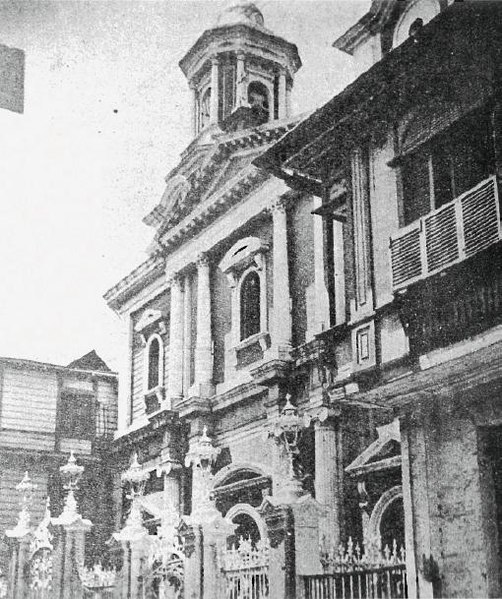
The first church stood where the University of the City of Manila is now located. The second church stood next to the guesthouse of the Roman Catholic Archdiocese of Manila and close to Palacio Arzobispal, the mansion that the Archbishop of Manila currently uses as his residence.
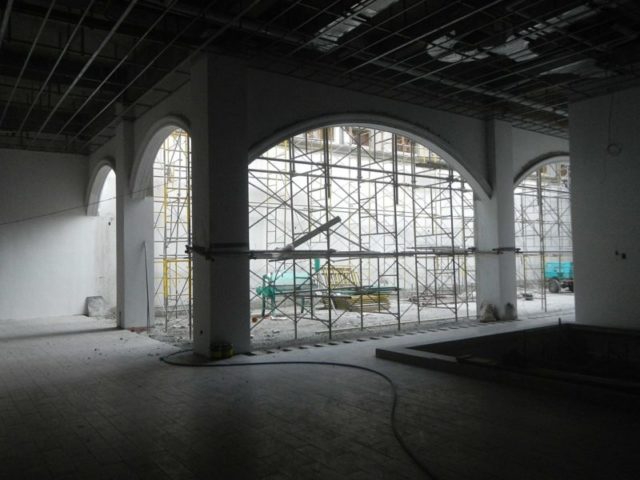
The first church’s location had already had three churches built in the area over a period of 292 years, from 1587 to 1879. The first church on the site had its foundations laid in 1587 and was designed by the architect Gianantonio Campioni, who was also a member of the Society of Jesus.
Funds for the church’s construction were donated by Don Gabriel de Ribera, a judge in the ex-appellate-court in Spain known as the Royal Audiencias and Chancillerías.
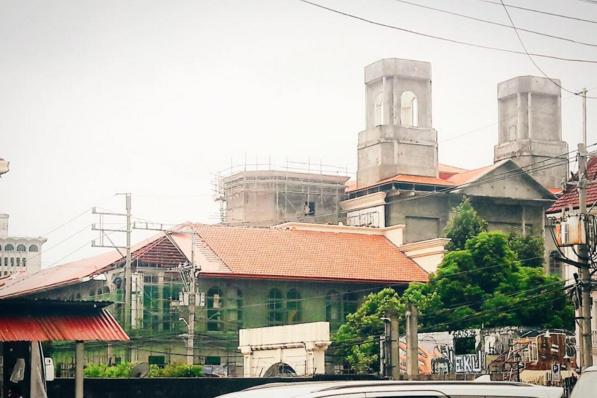
The church was made completely of timber except for the tiled roof. Three years after its construction commenced, the second church on the site was started, this time using stone. Unlike the first, which took 45 years to finish, the second church was finished in just six years; its construction began in 1590 and was finished by 1596.
The stone church was dedicated to the grandmother of Jesus, Saint Anne. Just four years after the church was finished, the Philippines was hit by a devastating earthquake and the church was significantly damaged.
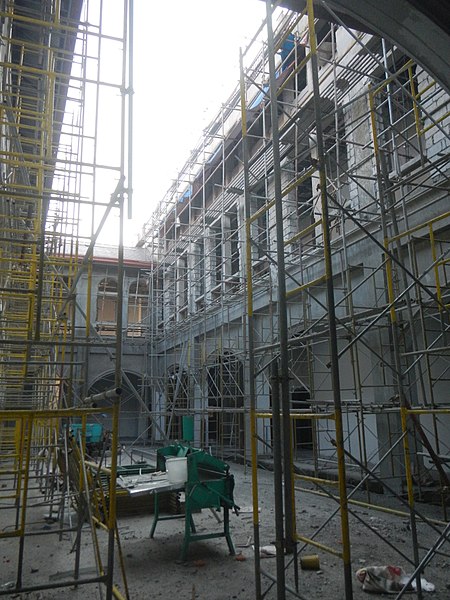
In 1626, a third church was erected on the site: one of the two that were dedicated to St. Ignatius of Loyola. Construction was completed in 1632.
As years passed, the Jesuit population of the Philippines slowly faded and, as of 1768, the church began to deteriorate. On September 6, 1852, another strong earthquake hit the Philippines and badly damaged the church. Only the bell towers and part of the nave were left standing.
For a period, the site of the church was used as a military compound. The 31st Infantry Regiment of the United States of America had their headquarters on the site.
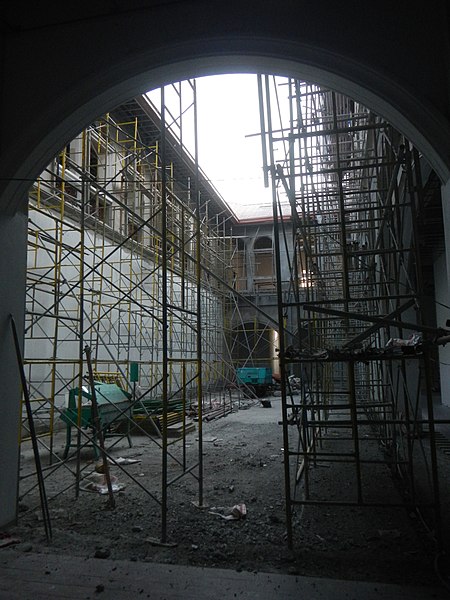
In 1879, the Jesuits were given proper authorization to use the old stones of the previous 17th century church to construct a new one. Felix Roxas Sr. was asked to construct the designs. The interior and statues were the work of Isabelo Tampingco. Much of the church’s interior was wooden.
The pulpit, as well as the altars, were the work of Agustin Saez and Tampingco’s atelier. At the time, Saez served as a director of Manila’s art academy as well as teaching art at Ateneo Municipál.
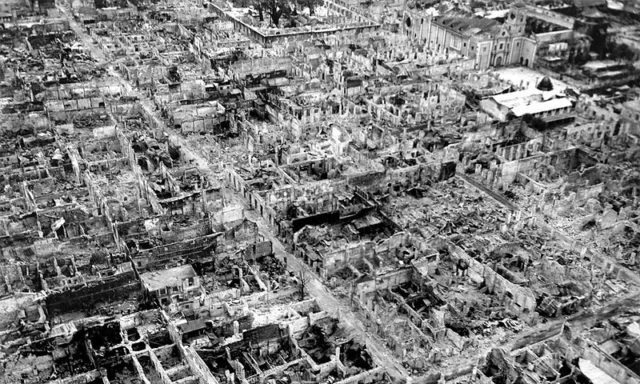
In 1889, the church was finally completed and prospered until 1945, when the Battle of Manila occurred. During the battle, around 100,000 civilians lost their lives and the church burned non-stop for four days before being destroyed completely.
When things settled, the City of Manila acquired the site of the church. The property has since been used for many different purposes, including the location of a warehouse and even a basketball court.
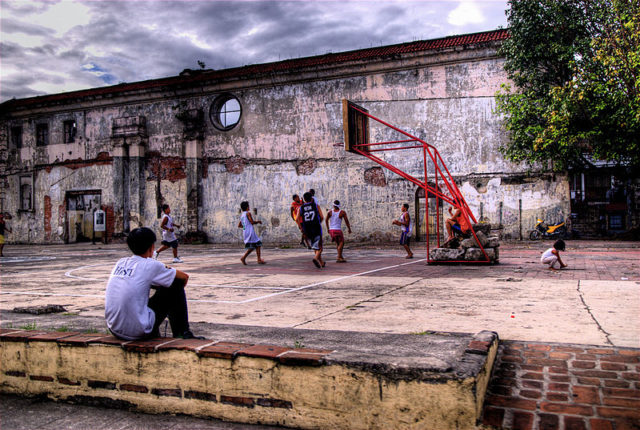
Recently, the church has undergone extensive renovations, and the current plan is for it to be converted into a museum.
